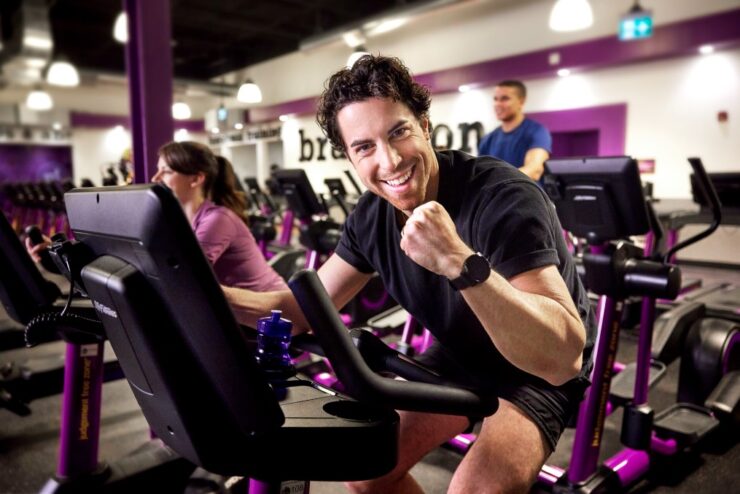Every scroll leads to a new fitness tip—burn belly fat fast, build lean muscle in days, detox your body with one drink. It all sounds convincing. But most of it is wrong. The internet is full of recycled myths, half-truths, and advice written by people who know how to market, not how the human body works.
Before you follow the next trending routine or nutrition hack, stop and ask: Who wrote this? What are they trying to sell? Where’s the proof?
The fitness space online is cluttered. You need more than motivation. You need sharp filters, real evidence, and trusted guidance.
Here’s why you can’t trust everything you see—and what to watch for.
Key Highlights
- Online fitness advice often promotes unrealistic or harmful expectations.
- Many fitness influencers lack certified training or science-based knowledge.
- Sponsored content and hidden product placements bias the message.
- Outdated fitness myths still dominate popular platforms.
- Artificial intelligence tools can produce generic, unverified fitness content.
- Critical thinking and verified sources must guide your fitness decisions.
1. The Trap of “Too Good to Be True” Results
Quick fixes dominate fitness headlines. Headlines promise six-pack abs in ten days or 20-pound fat loss in a week. These clickbait claims fuel false expectations. Most of those programs ignore science. No responsible coach will guarantee major body changes overnight.
The internet rewards extreme promises. Content that shocks often outperforms content that educates. Algorithms push whatever keeps people engaged, not what’s most accurate.
2. Anyone Can Call Themselves a Fitness Expert

No license is required to post fitness advice online. People with no formal education or hands-on experience publish daily routines, meal plans, and transformation tips. Some influencers even fabricate testimonials or use stock photos to build credibility.
Before following a fitness personality, check their background:
- Are they certified by a legitimate organization (e.g., NASM, ACE)?
- Do they provide evidence-based explanations?
- Is their message consistent or constantly shifting for trends?
3. Many Tips Are Just Sales Funnels
Fitness advice often acts as a hook to sell something else. A free guide might lead to an expensive supplement bundle. A 5-minute workout may funnel users to a paid app. The content may seem educational, but it’s structured for conversion.
Ask yourself: Is the goal to educate or sell?
When money is the motive, bias sneaks in. The workout isn’t shared because it’s best. It’s shared because it sells.
4. Artificial Intelligence Tools Generate Unreliable Content
Automated tools now create thousands of fitness blogs per day. Most of these articles lack context, nuance, or personal expertise. They pull common phrases and mix generic statements into articles that sound convincing—but offer no real value.
To detect low-quality content created by automated models, you can use Zero GPT. This advanced checker helps analyze whether a post was likely generated by artificial intelligence. It identifies patterns and phrasing typical of non-human writing, helping you spot which fitness advice was possibly produced without expert input.
Online fitness spaces are flooded with artificial intelligence-generated advice. While not all of it is wrong, much of it lacks depth, individualization, or real-world relevance.
5. The Myth of One-Size-Fits-All Programs

Fitness plans need customization. A routine that works for a 25-year-old male athlete may not suit a 40-year-old woman recovering from a knee injury. Online tips rarely offer that kind of personalization.
Cookie-cutter advice often ignores critical variables like:
- Body type
- Injury history
- Hormonal status
- Fitness level
- Recovery needs
Following random plans risks injury, burnout, or disappointment.
6. Nutrition Misinformation Is Everywhere
Food fads dominate fitness blogs and influencer pages. One day it’s keto, then carnivore, then juice cleanses. Each method has its place under the right conditions, but the internet rarely shows nuance.
Worse, some tips encourage dangerous behavior. Skipping meals. Cutting entire food groups. Taking unregulated supplements. These approaches can cause metabolic damage, emotional stress, and nutrient deficiencies.
Trust nutrition advice backed by registered dietitians or peer-reviewed studies—not someone’s before-and-after selfies.
7. Photos Lie. Period.
Transformation images are often staged. Better lighting, posture tricks, body oil, and even Photoshop give the illusion of progress. Many influencers manipulate timelines. A “30-day” change might have taken 6 months.
Before trusting tips based on visuals:
- Look for consistency over time.
- Read user comments and reviews.
- Check if other users had success following the advice.
8. Fake Testimonials Are Easy to Create

Anyone can write a comment. Fake accounts can leave praise. Influencers can invent clients and publish quotes. Some even pay people to promote results they never achieved.
Testimonials can help—but only if they come from real, verified people with detailed stories.
9. Product Placement Destroys Credibility
Some influencers recommend products they’ve never used. They earn a commission for every sale through their affiliate link. That green powder might not work—but it earns them $10 per click.
If a product link appears in every post, question the source. Is it a real recommendation or just another ad disguised as fitness advice?
10. Algorithms Prefer Hype Over Science
Social media platforms reward bold claims. A video promising a “miracle fat-burning drink” will spread faster than a video explaining how metabolism works.
Content designed for virality often avoids complexity. That means basic ideas repeat endlessly—calories in, calories out—without ever addressing hormonal health, sleep, stress, or lifestyle.
The most accurate advice often sounds less exciting but delivers more results.
11. Many Tips Ignore Mental Health
Some fitness plans trigger obsession, guilt, and self-criticism. “No excuses” slogans sound motivational but ignore burnout, depression, or real-life barriers like parenting or work.
Fitness isn’t just about aesthetics. It’s also about mental resilience, stress relief, and joy. Online tips that don’t mention balance or recovery may promote harmful patterns.
12. Real Progress Requires Real Context

You need to know the “why” behind a routine. Without context, the “what” doesn’t help. For example, a low-rep workout might help someone build strength—but might not help someone aiming to increase endurance or lose fat.
Many online tips skip that step. They present methods without the principles behind them. That leaves you confused and less likely to reach your goals.
13. Peer Pressure Influences Fitness Culture
When thousands of people follow a challenge, it feels like it must be legit. But popularity doesn’t mean effectiveness. Some trends catch fire for entertainment, not results.
Examples:
- 75 Hard
- Two-week shred programs
- 30-day no-carb challenges
Ask yourself: Is this program grounded in research or just a viral trend?
14. Outdated Ideas Refuse to Die
Myths like “no carbs after 6 PM” or “spot fat reduction” keep circulating. Even when science disproves them, social media resurrects them.
Be skeptical of advice that sounds recycled or over-simplified. Real results come from strategies supported by up-to-date evidence and personalized planning.
15. Certifications Don’t Always Mean Expertise

Some influencers flash fitness credentials. But not all certifications are equal. Weekend workshops and online quizzes hand out certificates with no real education behind them.
Even those with strong certifications can still promote bad ideas. Use your judgment. A credential adds weight—but doesn’t guarantee truth.
What You Can Do Instead
Not all online advice is bad. Some coaches, creators, and trainers provide high-quality content that changes lives. You just need a filter.
Use this 5-step checklist to vet any fitness tip:
- Check the creator’s credentials.
- Look for science-backed references.
- Watch for overly promotional links.
- Assess whether advice is personalized or generic.
- Trust your instincts. If it sounds extreme, it probably is.
Closing Thoughts ─ Choose Accuracy Over Algorithms
Fitness is a long-term journey. Chasing shortcuts, miracle tips, or internet trends often leads to wasted time—or worse, injury and frustration. Your body deserves more than recycled slogans and auto-generated blog posts.
Prioritize sources that respect the science of movement, the individuality of bodies, and the complexity of real-life schedules. AI detectors help weed out unreliable artificial intelligence content. Your health decisions should come from credible humans, not machines chasing ad revenue.
